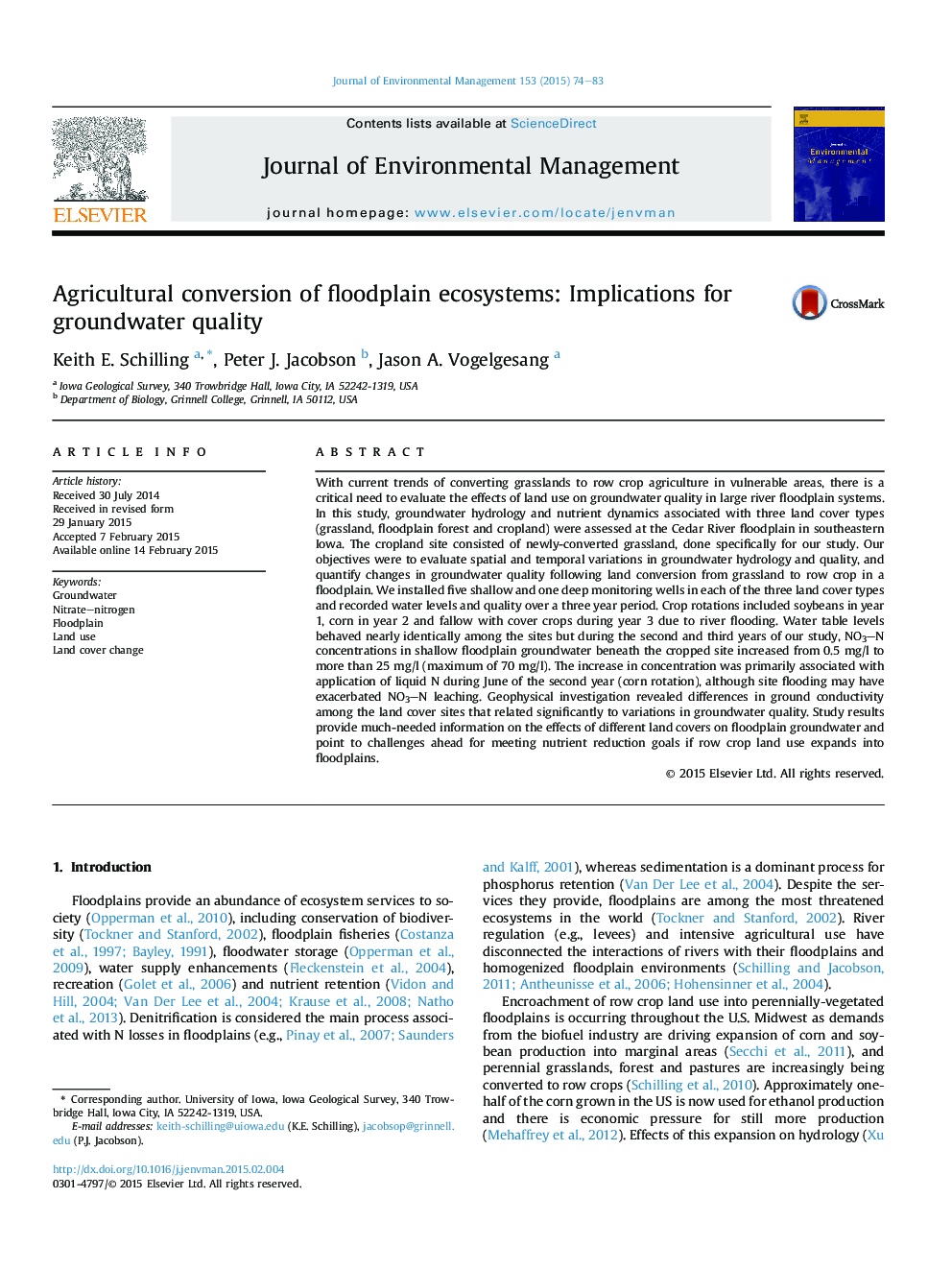| Article ID | Journal | Published Year | Pages | File Type |
|---|---|---|---|---|
| 1055628 | Journal of Environmental Management | 2015 | 10 Pages |
•There is a critical need to evaluate the effects of land use on groundwater in floodplains.•We compared groundwater hydrology and nutrient dynamics of three ecosystems.•NO3–N concentrations increased significantly following grass conversion to crop.•Subsurface lithology related significantly to variations in groundwater quality.•Floodplain farming involves risk to the producer and the environment.
With current trends of converting grasslands to row crop agriculture in vulnerable areas, there is a critical need to evaluate the effects of land use on groundwater quality in large river floodplain systems. In this study, groundwater hydrology and nutrient dynamics associated with three land cover types (grassland, floodplain forest and cropland) were assessed at the Cedar River floodplain in southeastern Iowa. The cropland site consisted of newly-converted grassland, done specifically for our study. Our objectives were to evaluate spatial and temporal variations in groundwater hydrology and quality, and quantify changes in groundwater quality following land conversion from grassland to row crop in a floodplain. We installed five shallow and one deep monitoring wells in each of the three land cover types and recorded water levels and quality over a three year period. Crop rotations included soybeans in year 1, corn in year 2 and fallow with cover crops during year 3 due to river flooding. Water table levels behaved nearly identically among the sites but during the second and third years of our study, NO3–N concentrations in shallow floodplain groundwater beneath the cropped site increased from 0.5 mg/l to more than 25 mg/l (maximum of 70 mg/l). The increase in concentration was primarily associated with application of liquid N during June of the second year (corn rotation), although site flooding may have exacerbated NO3–N leaching. Geophysical investigation revealed differences in ground conductivity among the land cover sites that related significantly to variations in groundwater quality. Study results provide much-needed information on the effects of different land covers on floodplain groundwater and point to challenges ahead for meeting nutrient reduction goals if row crop land use expands into floodplains.
